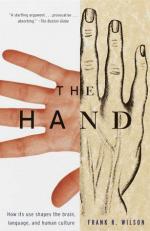
|
| Name: _________________________ | Period: ___________________ |
This quiz consists of 5 multiple choice and 5 short answer questions through Puppet Lessons from Alexandria and Dusseldorf.
Multiple Choice Questions
1. What type of control does a human or ape exert over its arm to execute a move?
(a) Intermittant.
(b) Unconscious.
(c) Conscious.
(d) Both conscious and unconscious.
2. What is one thing that shoulder and forearm development enabled?
(a) The ability to carve.
(b) The ability to throw objects.
(c) The ability to catch objects.
(d) The ability to hunt.
3. What does Merlin Donald's theory of cultural and cognitive evolution propose?
(a) The human brain developed in a three-stage process.
(b) The groupings of tribes developed in a two-stage process.
(c) The human body developed in a three-stage process.
(d) The human brain developed in a stop-and-go process.
4. From what does the word neuron derive its meaning?
(a) A Slavic word for entangle
(b) A Slavic word for transmit.
(c) A Greek word for cord or fiber.
(d) A Latin word for cord or fiber.
5. What operator has to do to anticipate load weight and wind changes?
(a) A crane operator.
(b) An elevator operator.
(c) A grain elevator operator.
(d) A bulldozer operator.
Short Answer Questions
1. From where does Sherrington discover signals originate to cause movement?
2. What does the author say comes to life even before you rise out of bed in the morning?
3. What does the coordination of muscles, tendons, ligaments, and bones do?
4. What does the hand "think" about as it helps you get ready for the day?
5. What is one thing that demonstrates the integration of movement in the shoulder, arm and hand?
|
This section contains 322 words (approx. 2 pages at 300 words per page) |

|




